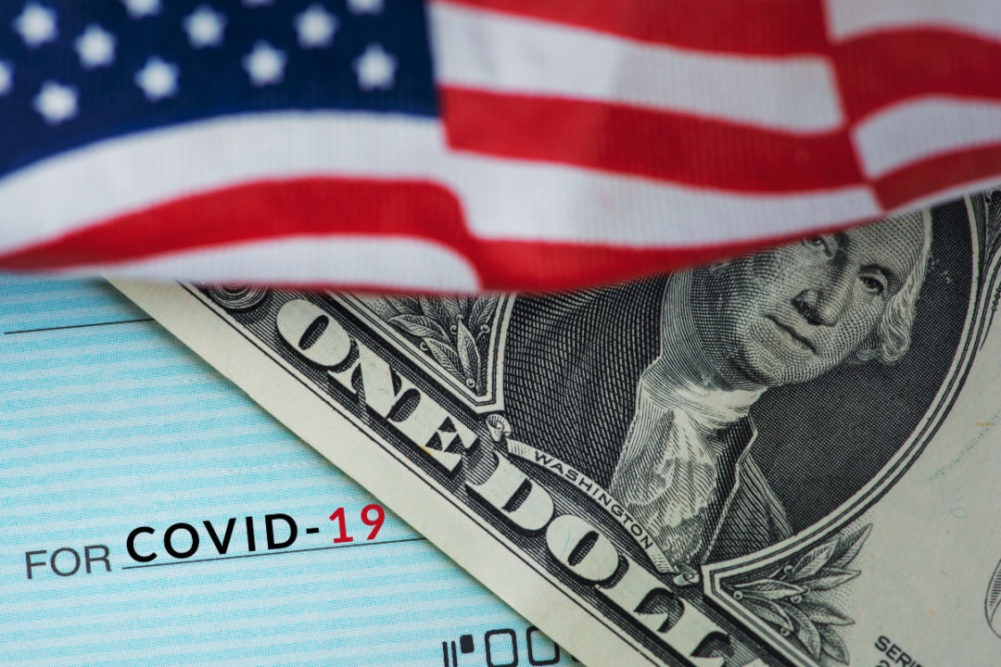WASHINGTON — A collective sigh of relief could be heard in Washington and across the nation on news President Donald Trump on Dec. 27 signed the $2.3 trillion Consolidated Appropriations Act, 2021, which included $900 billion earmarked for COVID-19 relief as well as funding for federal agencies and programs to ensure there was no government shutdown.
The new COVID-19 relief package includes provisions that will provide additional much needed support to the restaurant industry as well as to nutrition assistance programs and providers.
Support provided by the much larger $2.2-trillion Coronavirus Aid, Relief and Economic Security Act (CARES), which became law in March 2020, has been drawn down, which made securing the current relief package all the more urgent. Still, it was likely Congress will have to consider additional relief legislation in the new year.
The Paycheck Protection Program established under CARES was extended and revised under the current relief package. The PPP provides forgivable loans to small businesses to help them keep their facilities open and their workforces employed.
Businesses that received a PPP loan under CARES are eligible to apply for a second loan, or second draw, under the renewed PPP as long as they have used or will use the full amount of their first loans and they meet other revised eligibility requirements. Business that did not receive a PPP loan under CARES were invited to apply for a loan under the renewed program.
Extension of the PPP was a principal goal of the National Restaurant Association. The renewed PPP includes certain changes sought by the NRA that were expected to make it a more effective tool for struggling restaurants.
First, the revised PPP will provide a loan amount up to 3.5 times the average monthly payroll costs registered during the one year prior to the loan, or the prior calendar year, for businesses in the accommodation and foodservice industries, such as restaurants, as compared with loan amounts up to 2.5 times average monthly payroll costs for businesses in other sectors. The maximum loan amount in all cases was $2 million.
Second, the revised PPP features increased accessibility. Restaurant and lodging businesses with 300 or fewer employees per location are eligible to apply for a PPP loan. This compared with the requirement for other businesses that they must have 300 or fewer employees in total, spread across all their locations.
Under the initial PPP rules as established by CARES, businesses with fewer than 500 employees in total could apply for a loan.
The NRA said the changes to eligibility requirements in the revised PPP reflected “the reality that many mid-sized and larger restaurant groups are on the verge of bankruptcy and allows restaurants to qualify for PPP as long as they do not employ more than 300 employees at each physical location.”
Tom Bené, president and chief executive officer of the NRA, said the relief package “will keep tens of thousands of restaurants from closing in coming months. A second round of PPP, combined with unique enhancements for the restaurant sector, will provide critical access to capital.
“However, the long-term economic challenges facing independent, franchise and chain restaurants will not end with the new year, and we will continue to press federal and state leaders for the support that will put us on the road to recovery,” Mr. Bené asserted.
The NRA viewed the COVID-19 relief package as a “down payment” on what may be required to ensure the recovery of the restaurant industry.
The NRA has urged Congress to create a Restaurant Recovery Fund for structured relief to help restaurants get the liquidity they need to adapt, rehire and eventually reopen.
“This includes passage of the RESTAURANTS Act proposed by the Senate,” the NRA said.
The NRA also sought the establishment of a long-term loan program beyond PPP so restaurants can rehire, retrain and retain employees by providing up to six months of operating costs and additional support.
Food assistance providers also viewed the COVID-19 relief package as a down payment on what aid may be required.
The relief package increased the monthly SNAP benefit level by 15% based on the June 2020 Thrifty Food Plan through June 2021 and excluded pandemic unemployment compensation (UPC) benefits from being counted toward household income for SNAP. The package also extended SNAP eligibility to college students who are eligible for a federal or state work study program or have an expected family contribution of zero.
The package invested an additional $400 million in The Emergency Food Assistance Program (TEFAP) through Sept. 30, 2021. This program is one of the largest sources of food for food banks.
The COVID-19 relief also will provide $13 million to the Commodity Supplemental Food Program through Sept. 30, 2021, and will provide what emergency relief is required to help school meal, child and adult care programs in financial need.
Additionally, the relief package requires the US Department of Agriculture to establish a task force on food delivery models for the Special Supplemental Nutrition Program for Women, Infants and Children (WIC) participants so they have access to curbside pickup and other safe purchasing methods during the pandemic.
“We are deeply relieved that the bipartisan COVID relief deal includes an increase in benefits under SNAP, as well as additional funding so our network of food banks can continue to meet the increased need they are seeing every day,” said Kate Leone, chief government relations officer at Feeding America. “As our country continues to weather a once-in-a-generation public health and economic emergency, the bipartisan agreement is an important down payment to help provide the food assistance our neighbors need, but further action will also be necessary in the coming months.”


